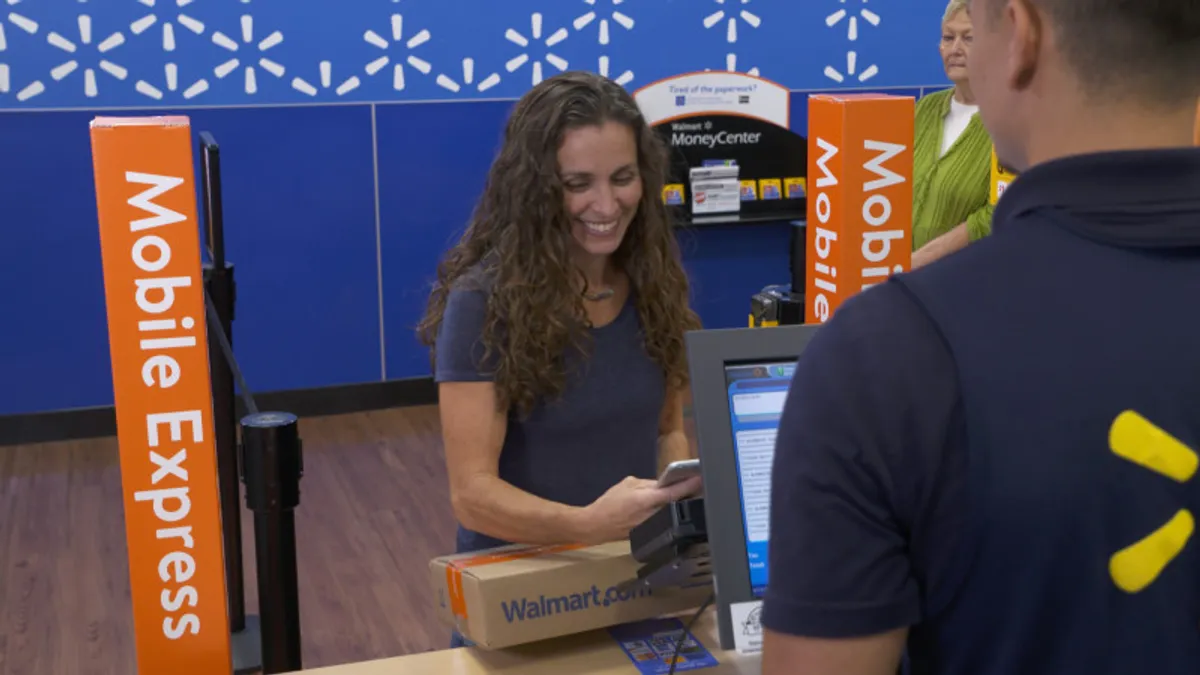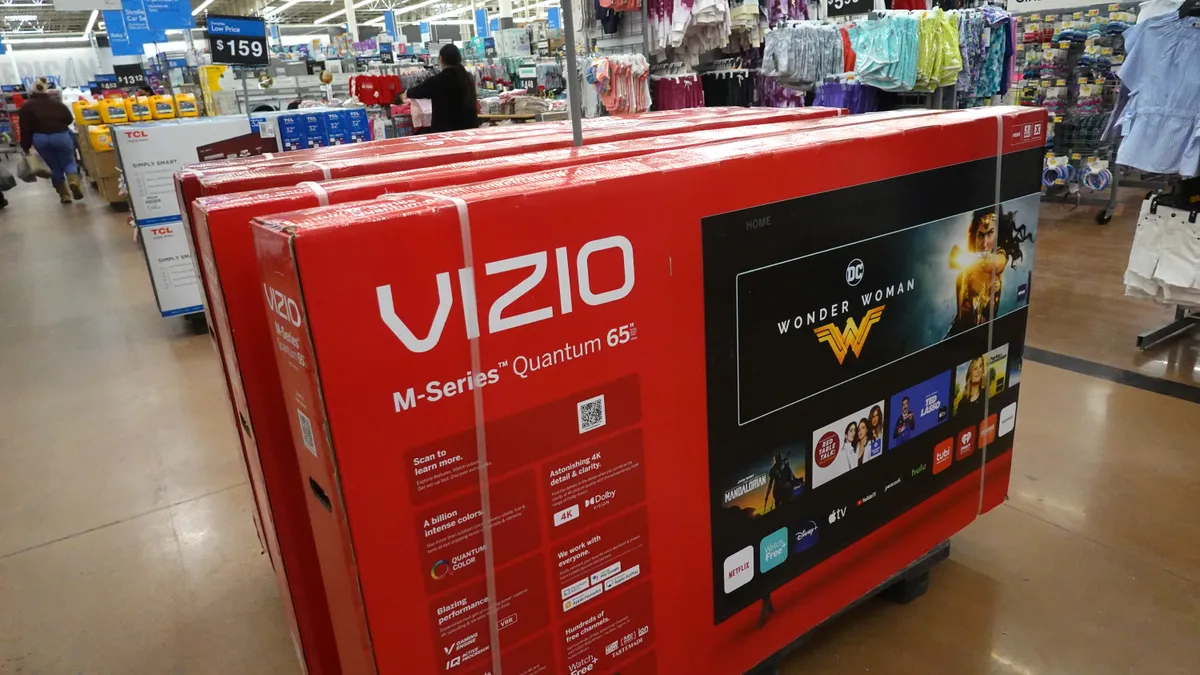Dive Brief:
- Walmart on Monday unveiled "Mobile Express Returns," a simplified returns process that will be available in early November for items sold and shipped by Walmart.com, and for store purchases in early 2018. The retail giant is also working to create a similar streamlined returns process for items sold by third-party marketplace sellers on Walmart.com, according to a company press release.
- Customers initiate a return using the Walmart App and finish it at the store, via the Mobile Express Lane at the customer service desk, the company said. Customers scan the QR code displayed on the card reader with the Walmart app, then hand the item to an associate. Refunds will be credited to customers’ payment account as soon as the next day.
- In some cases customers returning certain items, including personal care and household products, will have the option in the Walmart app to instantly receive their refund without even making a trip to the store to physically return the item. This feature will be available in early December, according to Walmart.
Dive Insight:
Amid an assertive push to boost e-commerce, Walmart is leveraging its massive store footprint to grow online sales with several options for in-store pickup of online orders and discounts for online shoppers that in-store shoppers don’t see. Returns is another sticking point for consumers shopping online and along with a renewed commitment to convenience, this move by Walmart aims to alleviate that pain.
Getting an item back to a retailer for a refund is a source of anxiety for some shoppers — enough to prevent a purchase, according to research from post-purchase solutions firm Narvar. (Although the flip side is sweet: Shoppers prone to returns are also the most likely to buy again.) But returns are no longer simply for merchandise that hasn’t worked out — they’re increasingly a part of the shopping experience, particularly online. Nearly half (48%) of shoppers surveyed said they had returned an online purchase in the last year, according to Narvar. Another half (49%) of shoppers check a retailer’s return policy before completing an online transaction.
"We know that returning an item and waiting for a refund, especially for a product purchased online, isn’t always seamless, so we’ve completely transformed the process for our customers — whether they are shopping in stores or at Walmart.com," Daniel Eckert, senior vice president, Walmart services and digital acceleration, Walmart U.S., said in a statement. "By leveraging our physical stores and the Walmart app, we’re changing the returns game in ways that only Walmart can do."
Amazon’s site is an easy-return zone, and the e-commerce giant is even piloting a Prime Wardrobe service that would allow Prime members to order three items or more and only pay for what they keep. But half of the merchandise sold on Amazon comes from its Marketplace, leaving a disconnect in customer experience on the platform. Although Walmart says it's working to incorporate its own marketplace into the new system, that could introduce the kind of complexities and complaints that Amazon faces.
Amazon also recently rolled out a new policy of automatically authorized returns for its Marketplace sellers, aligning the return policies of third-party sellers with its own, a switch that applies to sellers who don't pay Amazon for its third-party services. That, too, means that customers can ship back items without contacting the seller first to work through product issues before paying for a refund, and the policy reportedly upset many of those sellers.
Unlike Walmart, which emphasized the handy locations of so many of its stores in the announcement Monday, Amazon has few physical spots for returns. To ease that, the e-commerce giant is trying out a partnership with Kohl's, which has agreed to take Amazon returns for free in 82 of its stores. But taking this page from Amazon's playbook is less a customer service move and more an attempt move to stem shipping and handling costs that are an inevitable consequence of its e-commerce push, according to retail analyst Nick Egelanian, president of retail development consultants SiteWorks International.
"Losses multiply when online sellers are forced to absorb shipping costs both ways without offsetting profit from the sale," he told Retail Dive in an email. "The problem is made even worse when shuffling low value or short shelf life items out and back into the warehouse, which leads to even more cost and additional losses. As a result, retailers like Amazon sometimes lose less money by not taking the certain items back at all. It’s convenient for Walmart to put a customer service spin on this policy — however that is really nothing but PR. It’s all about minimizing already sizable losses on low value/high return cost sales."















